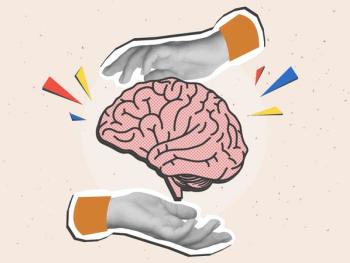
- Vol 38, Issue 12
Lithium Neurotoxicity: The SILENT Syndrome
This infrequent, but important, toxic effect of lithium deserves increased awareness.
BIPOLAR UPDATE
Many Bipolar Update columns concerning
The clinical profile of SILENT varies, but persistent cerebellar dysfunction is the most common finding, with extrapyramidal symptoms also typically present. Many of these cases involve insidious progression in patients on normal or low therapeutic levels of
When lithium is stopped, some or all of these symptoms may persist beyond 2 months, with some reports describing continued symptoms for 5 years. Most cases have residual impairments such as ataxia and dysarthria that continue for 1 year. Sometimes there is persisting cognitive dysfunction with memory loss and other symptoms of dementia. In other cases, additional atypical symptoms accompany the core features, including nystagmus, papilledema, and choreoathetoid movements suggestive of tardive dyskinesia.
SILENT’s cause is unknown. Demyelination has been found on biopsy of peripheral nerves and may occur in the cerebellum and elsewhere.1 This may account for the persistence of the neurological sequelae.
Precipitating or predictive factors may include diagnosis of schizoaffective disorder, marked psychosis, abnormal EEG prior to treatment, preexisting neurological illnesses including Alzheimer disease, and fever—especially high fever.1 Readers may recall the famous 1970s cases of neurotoxicity arising from the use of lithium plus haloperidol.3 All patients in those cases had very high fevers and high lithium levels, and they are now thought to have had cases of SILENT. Some other possible contributing factors could be hypertension, heart failure, rapid lowering from high lithium levels, and epilepsy.1
To prevent SILENT, it may be helpful to avoid high lithium levels through regular and frequent monitoring (eg, every 4-6 months). If symptoms develop,
The other side of the coin on lithium neurotoxicity, as discussed in a previous column,4 is the positive neurotrophic effects of lithium that benefit many patients. In a recent pilot study, for example, 12 patients recovering from stroke were prescribed open-label lithium for 60 days (target levels, 0.4-0.6 mEq/L). Gray matter volume as measured by MRI increased numerically (but not significantly; P = .07), and there was a significant correlation between higher lithium dose and gray matter volume increase (P = .004) and improved verbal memory (P = .05).5
In conclusion, lithium’s benefits to brain health are substantial, but there are rare cases of serious toxicity that should be detected as early as possible.
Dr Osser is an associate professor of psychiatry at Harvard Medical School and codirector of the US Department of Veterans Affairs’ National Bipolar Disorder Telehealth Program, in Brockton, Massachusetts. The author reports no conflicts of interest concerning the subject matter of this article.
References
1. Adityanjee, Munshi KR, Thampy A.
2. Hanlon LW, Romaine M III, Gilroy FJ, Deitrick JE.
3. Cohen WJ, Cohen NH.
4. Osser DN.
5. Sun YR, Herrmann N, Scott CJM, et al.
Articles in this issue
almost 4 years ago
Challenges and Opportunities Beyond COVID-19almost 4 years ago
Moving Beyond the Enormity Problem: Tackling the Global Refugee Crisisalmost 4 years ago
Exploring the Global Consequences of the COVID-19 Pandemicalmost 4 years ago
Issues in Women’s Health: Global Lessons, Opportunities, and Challengesalmost 4 years ago
Exploring the Link Between Migraine and PTSDalmost 4 years ago
Social Determinants and Clinical Realitiesalmost 4 years ago
Temperature Checkalmost 4 years ago
Conference Presents Clinical Reviews and Updatesalmost 4 years ago
Current Health Care System Cannot Survive Aging Populationalmost 4 years ago
PareidoliaNewsletter
Receive trusted psychiatric news, expert analysis, and clinical insights — subscribe today to support your practice and your patients.











